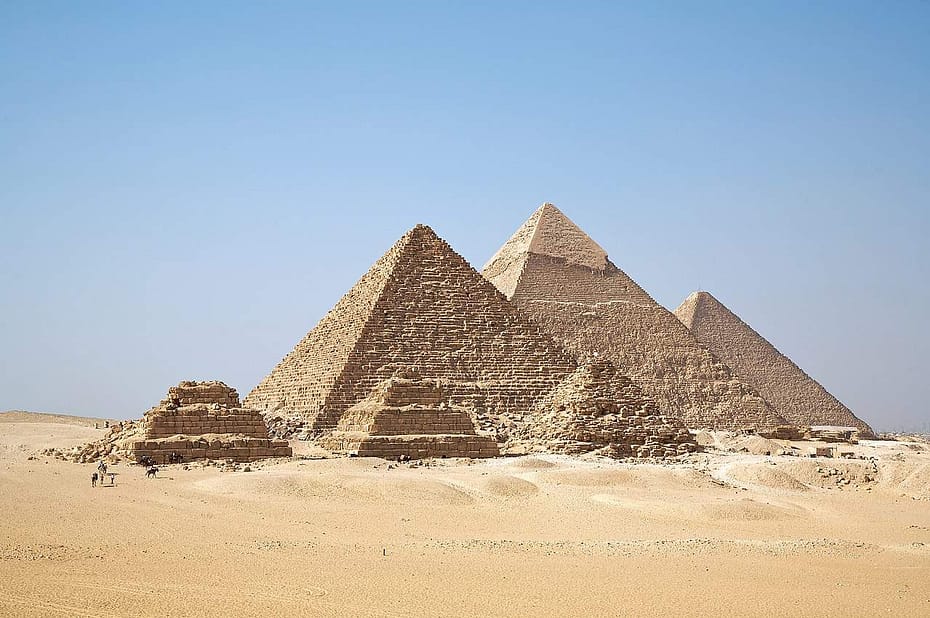One of history’s most antiquated and perplexing riddles is the development of the Pyramids. Over and over, throughout history, numerous researchers had a similar inquiry of ‘how we fabricate pyramids.’
The Incomparable Pyramids of Giza and different pyramids are the best bits of human designing and engineering. These landmarks still emphatically remain after north of 4,500 years and are as yet a secret perplexing right up ’til the present time. A few sacred texts found from Antiquated Egyptians can assist us with understanding a piece better how the development of such landmarks has occurred.
These immense designs of limestone or mudbrick are the most established known man-made constructions on our planet
How Were the Pyramids Built?
The methods that were utilized during the time spent building the Egyptian pyramids have confused and bewildered numerous students of history and researchers for incalculable years. Numerous dubious theories were for the development of the pyramids. The overall hypothesis depends on the conviction that the enormous stones from the quarries utilize copper etches. Then, at that point, these squares were hauled and lifted into position. In any case, the technique in regards to the development and arrangement of these stones is under extraordinary debate.
What is sure is that the labor force was profoundly coordinated and figured out how to the most elevated level by following a coordinated and arranged cycle that comprised of three stages.
Periods of Building the Pyramids
The labor force relied upon a particular cycle to fabricate the pyramids completely following three significant stages: picking the ideal structure site, site planning, and raising the squares.
Stage 1: Picking the ideal structure site Pyramids
The initial phase in building a pyramid was to pick a reasonable site. This must be on the west side of the Nile where the Sun would set, taking into account that Antiquated Egyptians accepted that any place the sunsets that are was the gateway to life following death.
The pyramids should’ve been in a strategic position, away from the risk of flooding the Nile’s immersion. In any case, it couldn’t be excessively far away from the Nile bank. Simply because the waterway ships squares of fine quality limestone for the external packaging from Tura on the opposite side of the Nile.
The site picked would be at a point on the desert level that would be demonstrated a firm stone base fit for supporting the extraordinary weight of the pyramid with no gamble of breaking thinking about that as some of the best pyramids weigh around 2.5 tons.
The site picked for the pyramids’ development was viewed on the distance of the pyramid to the individual ruler’s home. As the Lord would have to routinely review the advancement of his entombment chamber
Stage 2: Setting up the site of
The development was not an erratic issue and the estimations utilized were exact to a serious level.
The laborers had first to set up a firm establishment by eliminating the free sand from the stone. The laborers might have done this by building low mud dividers overall around the base and cutting directions in a framework design over the surface. Then, at that point, they would fill the channels with water and imprint the level the water would reach. After the water had depleted away, the projecting stone would have been scaled back to the level shown. And any touches of melancholy loaded up with stones to make a completely level surface.
Each side of the pyramid needed to confront one of the cardinal places. The manufacturers likely settled genuine north first and worked out different headings from that. They might have seen it as evident north by taking a location on a specific star in the northern sky. They’d then notice the rising and setting of the star and imprint its appearance and vanishing on an aviation instrument.
By bisecting the point subsequently made, they would acquire a north-south line. They had instruments for drawing the right points so; they would then have had the option to see as east and west. Then, they needed to make the base completely square. With every one of the four sides the very same length and the corners in wonderful right points.
Stage 3: Raising the squares
Now and then rough outcrop was at the center of the pyramid to save the work. The development of internal loads and sections and the genuine pyramid worked around them. A portion of the illustrious pyramid developers appears to have altered their perspectives on their favored area of the entombment chambers. The inward pyramid would then cut limestone from the desert level. At times stone was for the lower courses.
The stones utilized in the structure of the pyramids were not little blocks. The blocks in the pyramid fluctuate in size. Nonetheless, the biggest is in the Ruler’s chamber. These specific stones vary from the ordinary limestone obstructs are rock.
The principal issue with this is that the incline would ultimately have been colossal as the actual pyramid and would have ventured a gigantic distance into the desert.

